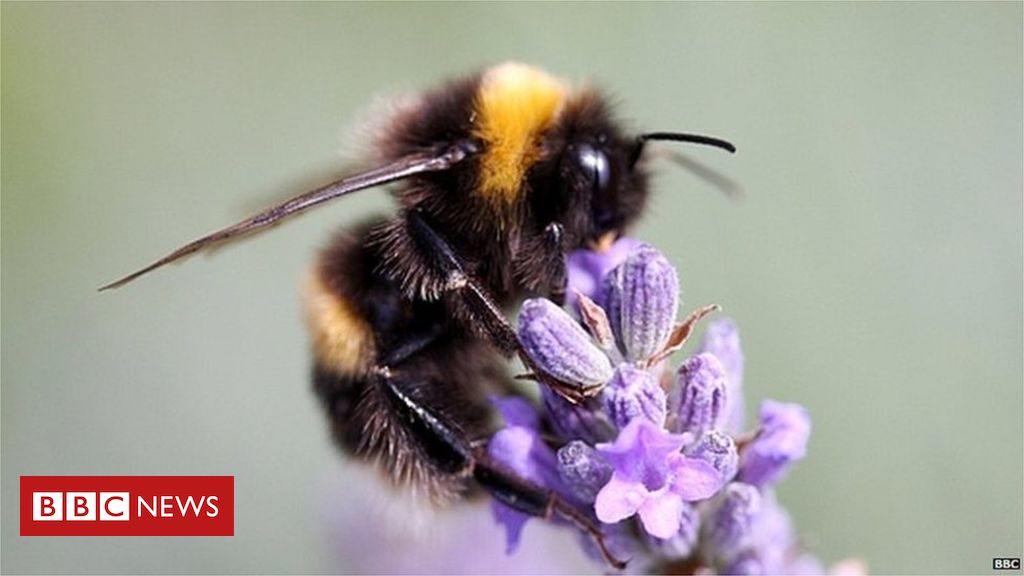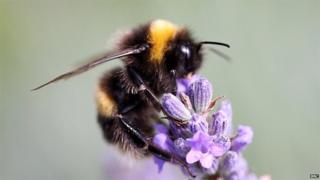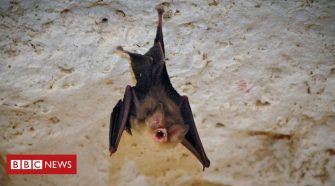Urban habitats are becoming increasingly important for pollinators, such as bumblebees
Bumblebees in towns and cities prefer violet coloured native flowers to other available blooms, a study has shown.
The researchers behind the work say the needs of urban pollinators are often overlooked for other factors, such as aesthetics.
Almost 30% of bumblebee species in Europe are estimated to be threatened or near threatened with extinction.
The findings have been published in the Urban Forestry & Urban Greening journal.
“This trend is related to habitat loss as a result of agriculture intensification, urban development and climate change,” the team of scientists wrote.
The plight of the bumblebee
The decline of bumblebees and other pollinators has been causing concern as the insects play a key role in the pollination of crops we rely upon for food and resources.
The researchers noted that urban areas were becoming increasingly important habitats for pollinators because the world was urbanising rapidly and there were sharp changes in land management.
“Cities promote the occurrence of bee species by the richness of flower plants,” they observed.
However, they added: “The selection of plants in urban spaces is more and more dictated by aesthetic and marketing reasons, which is not necessarily related to plants’ attractiveness for pollinators.”
The study outlined that exotic flower species were often unattractive to native pollinators as many of the species available in garden centres were “sterile hybrids” that had lost the ability to produce pollen and nectar.
“In the face of the progressive decline in bumblebee numbers and species richness, [bumblebee] protection has become a necessity,” they warned.
“Bumblebees more often opt for violet-coloured (native) flowers”.
They recommended the enrichment of “habitats in food plants that meet the requirement of individual bumblebees species” as the best way to “secure their basic life needs”.
The findings were based on the study that determined the species and abundance of bumblebees in the green areas of the city of Wroclaw, in south-western Poland.
The researchers said that understanding the different requirements of bumblebees would help define ways to encourage and protect bees that could be beneficial for architects, urban planners, landscape managers and residents themselves.
















